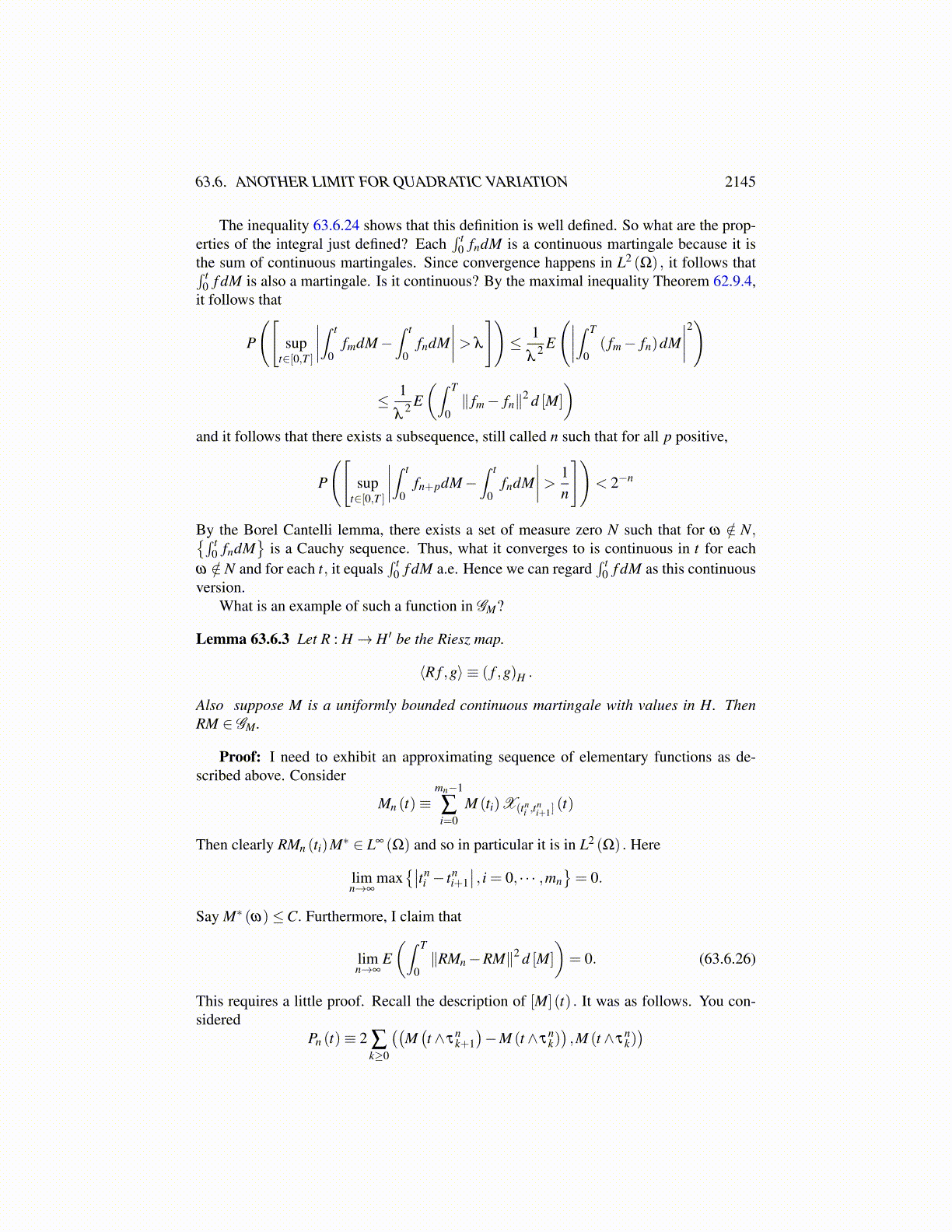
63.6. ANOTHER LIMIT FOR QUADRATIC VARIATION 2145
Lemma 63.6.1 The kth term in the above sum is a martingale and the integral is also amartingale.
Proof: Let σ be a stopping time with two values. Then
E ( fk (M (σ ∧ tk+1)−M (σ ∧ tk)))
= E(E(
fk (M (σ ∧ tk+1)−M (σ ∧ tk)) |Ftk
))= E
(fkE((M (σ ∧ tk+1)−M (σ ∧ tk)) |Ftk
))= 0
and it works the same with σ replaced with t. Hence by the lemma about recognizingmartingales, Lemma 63.1.1, each term is a martingale and so it follows that the integral∫ t
0 f dM is also a martingale.Note also that, since M is continuous, this is a continuous martingale.As before, it is important to estimate this.
E
(∣∣∣∣∫ t
0f dM
∣∣∣∣2)≤?
Consider a mixed term. For j < k, it follows from measurability considerations that
E(( fk (M (t ∧ tk+1)−M (t ∧ tk)))
(f j(M(t ∧ t j+1
)−M (t ∧ t j)
)))= E
(E[( fk (M (t ∧ tk+1)−M (t ∧ tk)))
(f j(M(t ∧ t j+1
)−M (t ∧ t j)
))|Ftk
])= E
((f j(M(t ∧ t j+1
)−M (t ∧ t j)
))fkE[(M (t ∧ tk+1)−M (t ∧ tk)) |Ftk
])= 0
Therefore,
E
(∣∣∣∣∫ t
0f dM
∣∣∣∣2)
= E
(m−1
∑k=0| fk (M (t ∧ tk+1)−M (t ∧ tk))|2
)
≤ E
(m−1
∑k=0∥ fk∥2 |M (t ∧ tk+1)−M (t ∧ tk)|2
)
= E
(m−1
∑k=0∥ fk∥2 ([Mtk+1 −Mtk
](t)+Nk (t)
))
= E
(m−1
∑k=0∥ fk∥2 ([Mtk+1
](t)−
[Mtk](t)+Nk (t)
))
= E
(m−1
∑k=0∥ fk∥2 ([M] (t ∧ tk+1)− [M] (t ∧ tk)+Nk (t))
)
= E
(m−1
∑k=0∥ fk∥2 ([M] (t ∧ tk+1)− [M] (t ∧ tk))
)